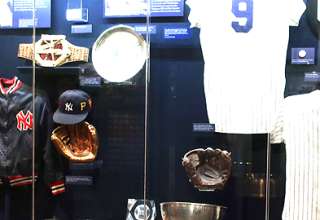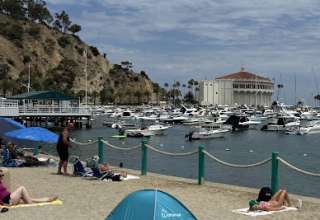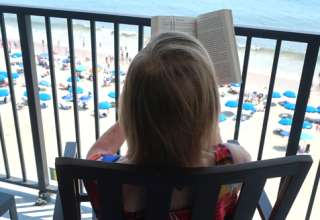By Ed Boitano, Photography by Deb Roskamp

The Gateway Arch towers over the mighty Mississippi. Built in 1963, it is today the symbol of St. Louis. Blues music fills the night, and St. Louisans sit at sidewalk cafes in the historic Soulard neighborhood in front of tables of toasted ravioli, paper-thin square-cut pizza, and frosted mugs of Bud, the beer here that is still king.
Four hours west down the road, a fountain glistens in the Kansas City twilight. The city has 200 of them, more than any city outside of Rome. From the Blue Room, a club in the iconic 18th & Vine Historic Jazz District, a jazz quartet is warming up for their evening set, while the fragrance of hickory smoked barbecue is still in the air.
Greetings from the heart of the Heartland. Throw a dart at the dead center of a map of the Continental US and you will hit a highway in Missouri called I-70. This highway links two world-class cities, St. Louis and Kansas City, each situated on opposite ends of Missouri.
I am happy to report that many of the stereotypes that I had of the Midwest are true: the people are warm and hospitably; fiercely proud about their cities, but not pretentious about it. The food is good and the portions are huge. But this is only where the accolades begin. Linked by the 250-miles of pavement, the cities have much in common, but still are very different from one another, each offering their own unique charms.
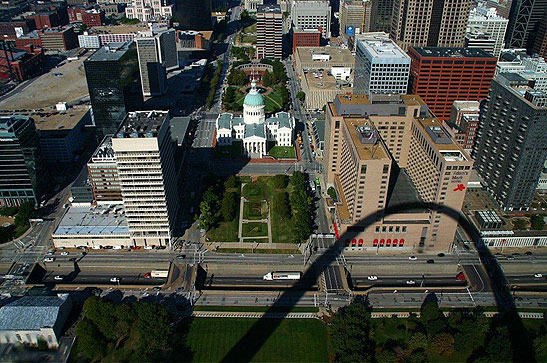
- ST. LOUIS: THE MOST WESTERN CITY OF THE EAST
- POPULATION: 293,310
- MONIKERS: “Gateway to the West” | “Mound City”
- ICONIC SYMBOL: At 630 ft., The Gateway Arch is the nation’s tallest man-made monument, twice the size of the Statue of Liberty. Take the tram ride to the top for stunning views of downtown St. Louis and the muddy Mississippi.
- FAMOUS ST. LOUISANS: Chuck Berry, T. S. Eliot, William Burroughs, Miles Davis, Tennessee Williams, Yogi Berra.
BACK STORY: Located on the western banks of the Mississippi River, St. Louis’ first inhabitants were the Mississippians, Indian mound builders. As many as 40,000 people lived in what was then the largest city north of Mexico. By 1300 AD, the civilization mysteriously disappeared, and the French arrived in 1698, establishing a mission and a thriving trading port. The US flag was raised in 1803 when Thomas Jefferson purchased the Louisiana Territory from Napoleon I, making it part of his plan for a Continental United States. The 1904 St. Louis World’s Fair gave the city international recognition. It is known today for manufacturing, medicine, biotechnology, and other sciences.
THE VIBE: St. Louis is renowned for its historic neighborhoods of red brick and expansive parks. Like most eastern cities, it is a pedestrian town with a great transit system. Soulard is a former French neighborhood, lined with bars and pubs, while the chic Central West End offers sidewalk cafes, boutiques and antique stores. Forest Park, home of the World’s Fair, features 1,300 acres of lakes, walking paths and an array of free cultural institutions. The Hill is the Italian neighborhood, while the The Loop is the hot spot for concerts. For the adventurous, swing over to East Louis, and you’ll seed why its moniker is East Boogie.
CULTURAL ATTRACTIONS: Experience the Saint Louis Art Museum, the Missouri Botanical Gardens and the Saint Louis Zoological Park. See a stage show at the famous Fox Theater, tour the Anheuser-Busch Brewery and visit the Museum at the Gateways Arch for an indepth look at St. Louis’s role in United States history.
EATS: Thanks to the Hill, there’s toasted ravioli and St. Louis-style pizza, super-thin crusted, made with Provel process cheese often via Elmo’s Pizza. Other delights include Gooey Butter Cake and shoulder-cut St. Louis Pork Steak. With a large German population, beer has always been essential and Budweiser dominates the market, but micro-brews like Alpha Brewing Company and Side Project Brewing are gaining well-deserved attention.
BLUES: Due to its location the on banks of the Mississippi, St. Louis blues music is a tantalizing hybrid of Mississippi Delta and Chicago blues. The city boasts more working blues musicians than any other city in the world.

- KANSAS CITY: THE MOST EASTERN CITY OF THE WEST
- POPULATION: 508,394.
- MONIKERS: “The Fountain City” | “Paris on the Plains”
- ICONIC SYMBOL: With respect to the 200 fountains, the National World War I Museum gets my vote. It is the only national museum in the US dedicated to The Great War, and an experience that will touch your soul.
- NOTABLE KANSAS CITIANS: Charlie Parker, Robert Altman, Joan Crawford, Walter Cronkite, Wallace Beery, Walt Disney.
BACK STORY: Originally a homestead settlement, Kansas City is located at the confluence of the Missouri and Kansas rivers. It became an important site for America’s westward expansion, with the Santa Fe, California and Oregon Trails all originating in the area. The location of a number of Civil War battles, Kansas City was incorporated in its present form in 1850. It gained national attention when the stockyards were established in 1871, the second largest in the country. This is where Kansas Citian’s love affair with beef began, and it became acclaimed for its barbecue. Today Kansas City is headquarters to nine Fortune 500 companies and numerous agriculture companies.
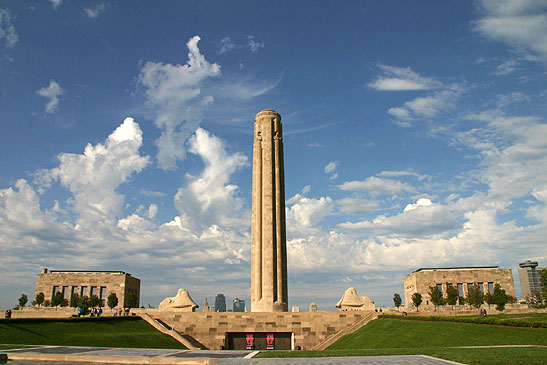
THE VIBE: Kansas City is distinguished for its spacious boulevards, numerous parks and over 200 fountains. This is a western-style town and a car is required to get around. Designed in 1922, The Country Club Plaza is 14-square-block outdoor shopping and entertainment district with Spanish-Moorish architecture. The 18th & Vine Historic Jazz District is a swinging hot spot and the place to learn about Kansas City jazz. The Crossroads Arts District is a growing arts community, while the downtown River Market features the Midwest’s largest farmer’s market.
CULTURAL ATTRACTIONS: Visit the Nelson-Atkins Museum of Art and the architectural wonder, the Kemper Museum of Contemporary Art. The American Jazz Museum and the Negro Leagues Baseball Museum both share the same building, and the Arabia Steamboat Museum is located in the River Market.
EATS: Barbecue is synonymous with Kansas City and today over 100 establishments feature hickory or pecan smoked ribs, brisket and burnt-end ribs. Each restaurant seems to offer its own secret sauce. Other delicacies include Kansas City Strip Steak and Chicken Spiedini. For beer you can do little better than the micro-brews, Casual Animal Brewing Company and Torn Label Brewing.
JAZZ: Kansas City became celebrated for its jazz clubs when political boss Tom Pendergrast ignored prohibition and allowed alcohol to flow into the 12th District. Displaced musicians poured in just as fast, inventing swing jazz and new late-night sensation called the jam session.
For further information, visit Explore St. Louis and Visit KC.





